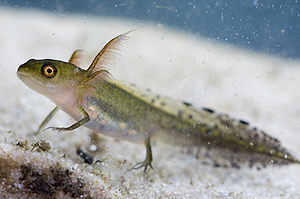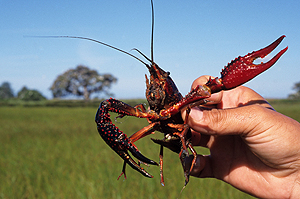The team in biological invasions has two professors of research and a Ramon & Cajal fellow incorporated two years ago. In the last 5 years, the research team has published on average more than 25 SCI papers per year in topics related to the biogeography, species traits, ecosystem resistance to invasion and the impacts of non-native species mainly plants, birds and fishes on biodiversity and ecosystem services. This research provides the background for the analysis of risks of invasion. The team is funded by regional, national and international projects (7th EU Framework programs, COST actions) and has well established collaborations with ecologists from all continents. The team has a strong commitment to junior research training, outreach (e.g. many TV and radio interviews, publications for the general public) and service both at the national and international level (e.g. CITES, IUCN, NEOBIOTA working groups).
Invasion by alien species, including free-living plants and animals as well as parasites and pathogens, is a major component of global change, causing important impacts on the biodiversity and ecosystem services and human well-being. From the conservation point of view, concern over these problems has prompted a plethora of research on factors determining alien species establishment, abundance and spread in recipient regions so as to be able to prevent situations where the risk of invasion is particularly high. From a theoretical point of view, the phenomena of biological invasions are considered grand experiments to understand aspects regarding biogeography, community species assemblages, population dynamics and evolutionary forces.
We examine the multifaceted causes and consequences of biological invasions, a key component of global change. The ultimate goal is to improve our knowledge of the factors that influence the success and impacts of invasions by plants and vertebrates, mainly birds and fishes. For this purpose, we investigate species traits conferring invasive potential, explore them, and determine the vulnerability of ecosystems to be invaded and the sensitivity of native biodiversity to invasions under different environmental conditions and scenarios of global change.
Our first aim is to understand the resistance of species to invasion including herbivory resistance for plants, and organism physiological and immunological status for vertebrates. Second, we investigate mechanisms of impact at different spatial scales and at different levels of ecological complexity. For example, we are describing the impacts of alien flowering on native plant-pollinator species, the legacy effect that remains even after alien plant removal at the landscape scale or the mechanisms involved in the decline of native fish species in invaded water masses. Third, we study habitat, landscape and climatic factors influencing invasion success. For this purpose we also describe past invasions and their invasion patterns through time, as well as potential distribution areas in the future in the face of climatic changes and changes in land-use.
Researchers: Montserrat Vilà, Miguel Clavero, José Luis Tella



